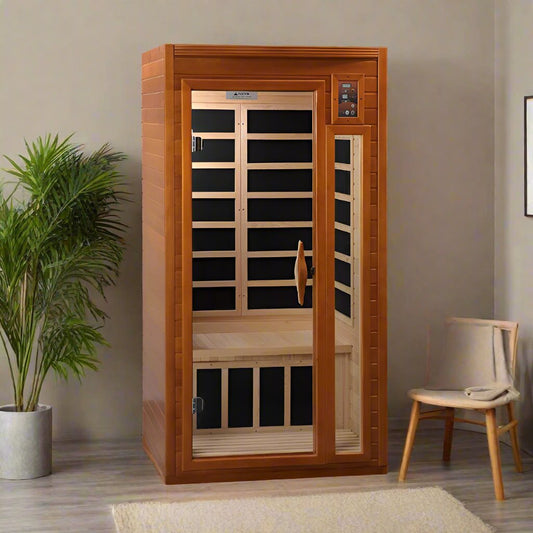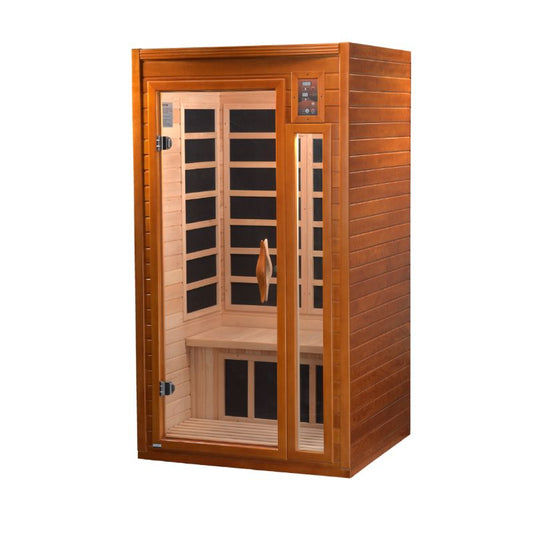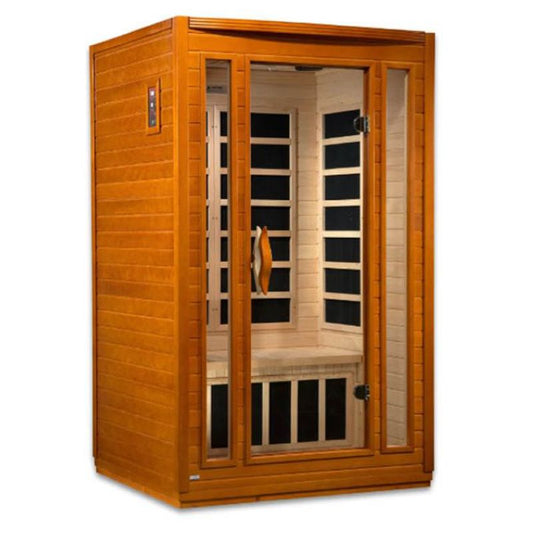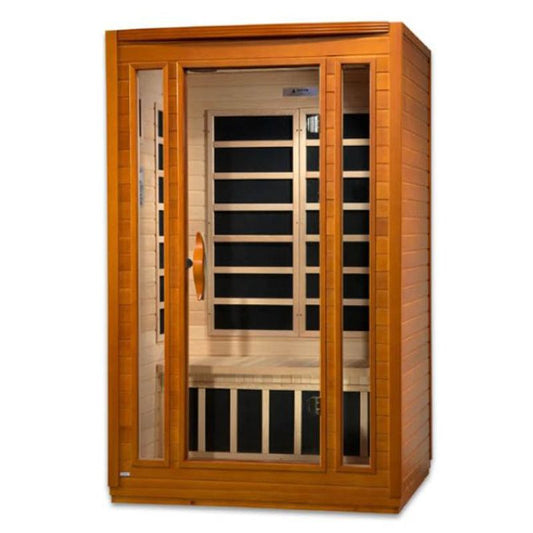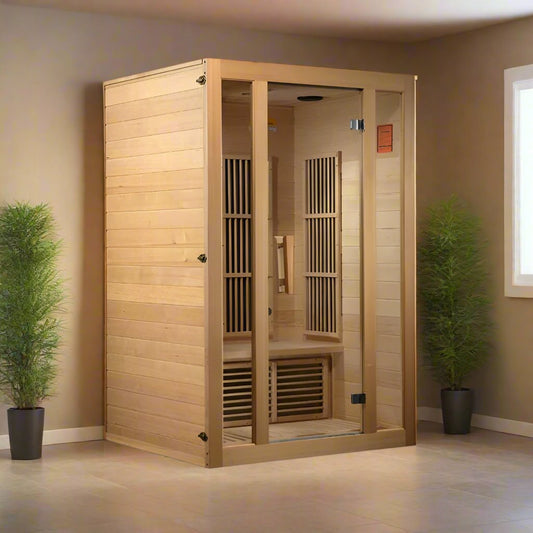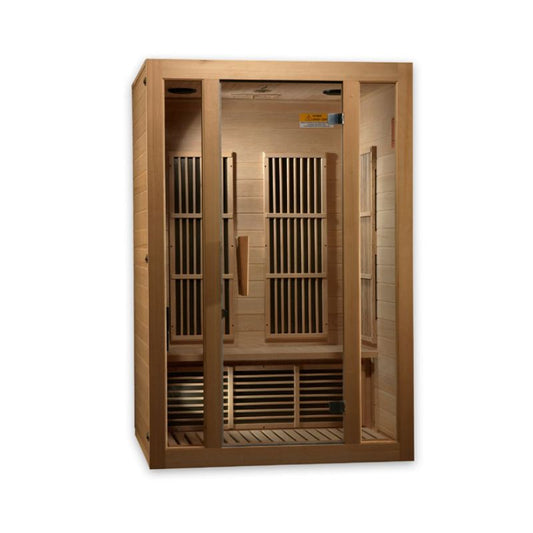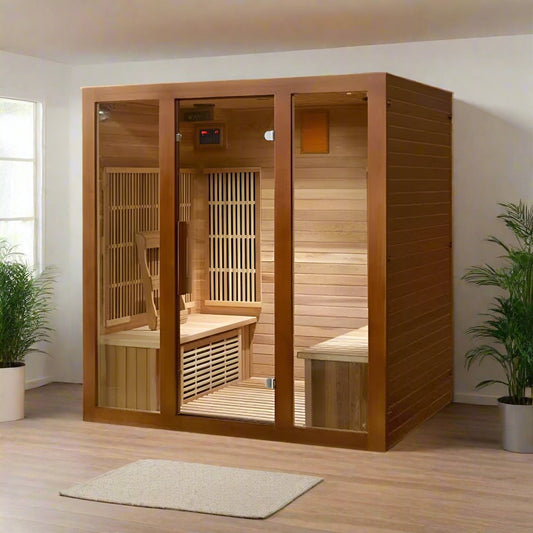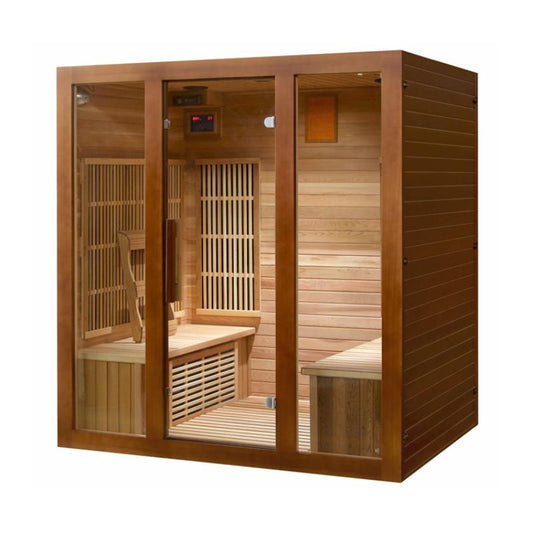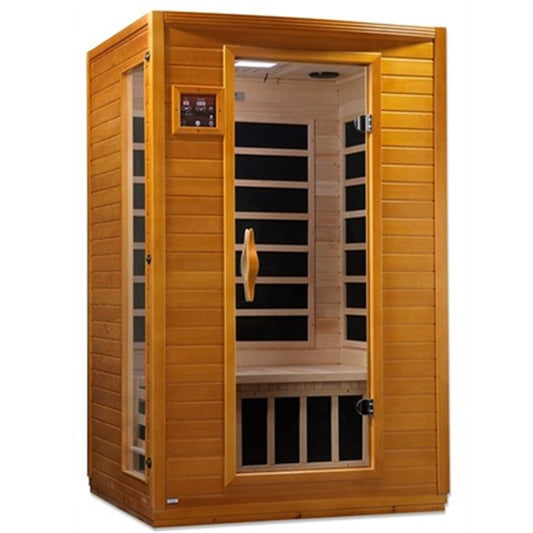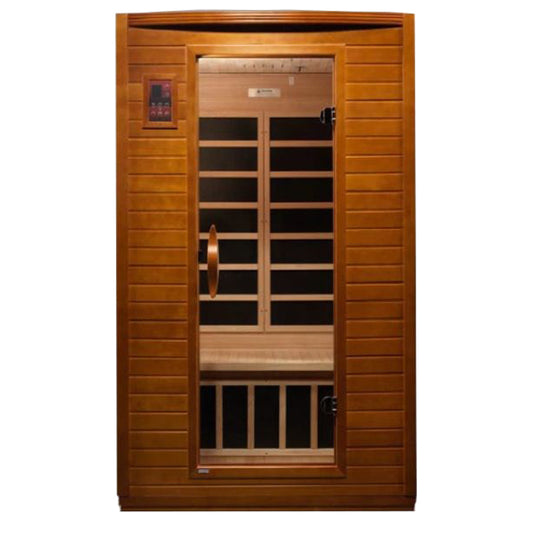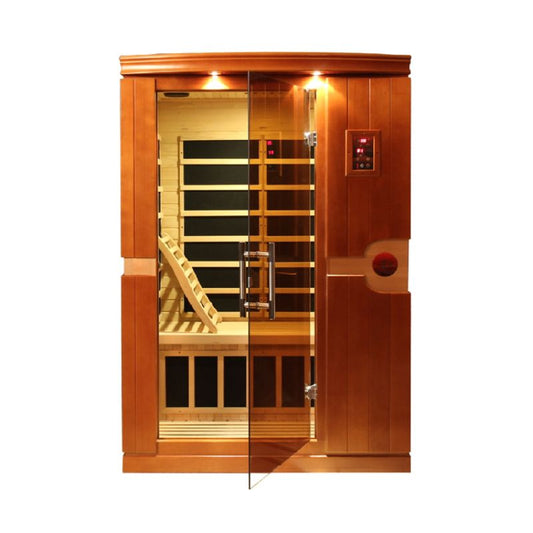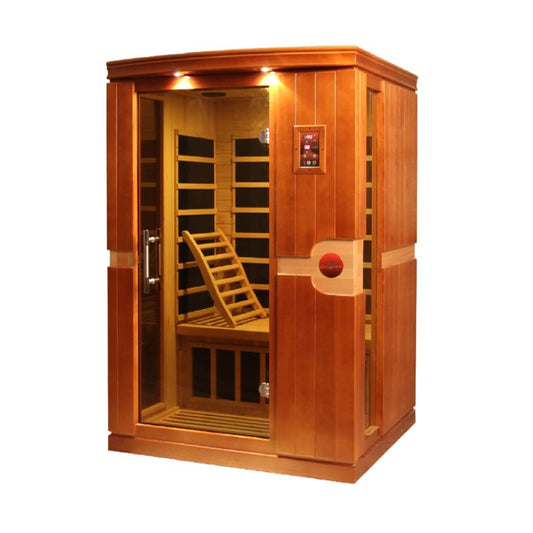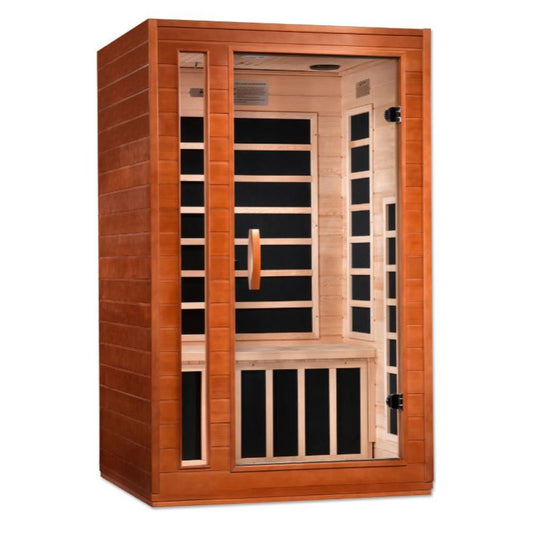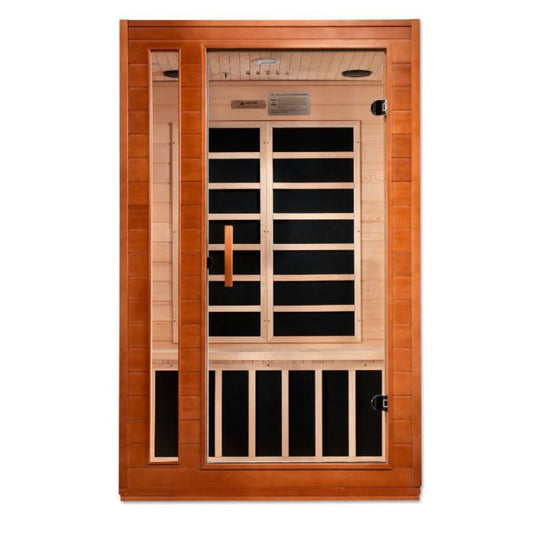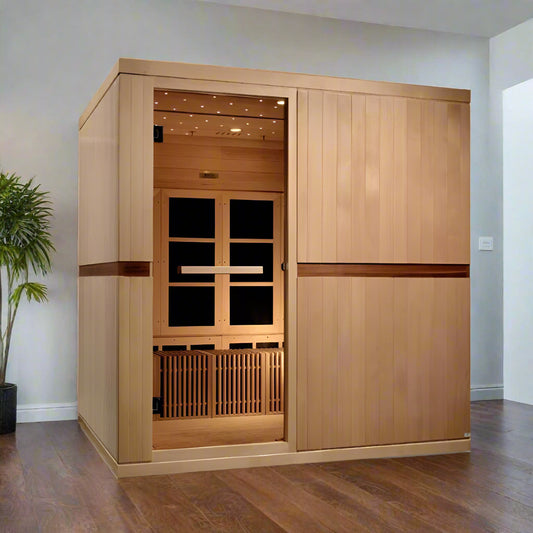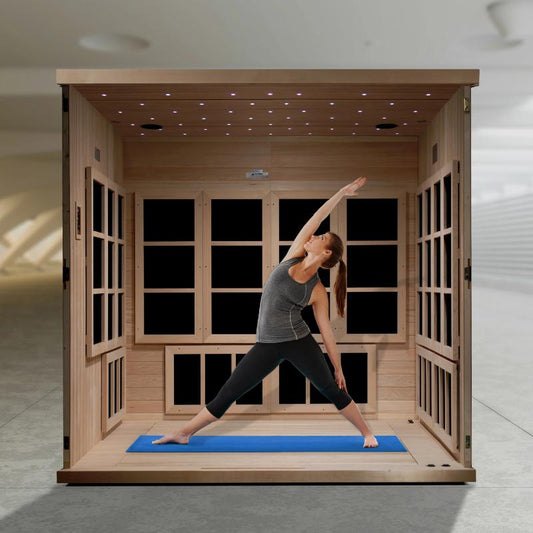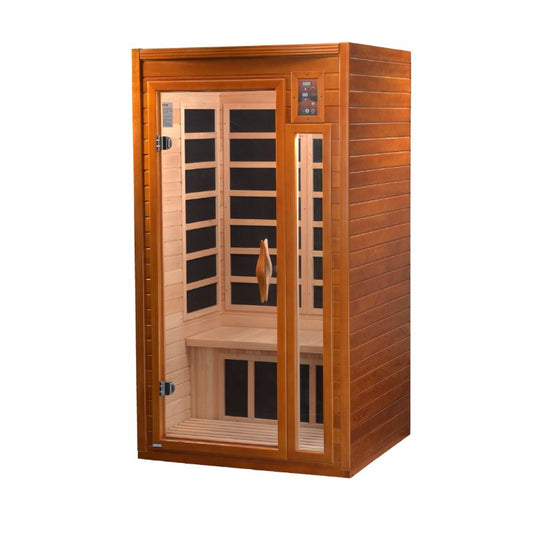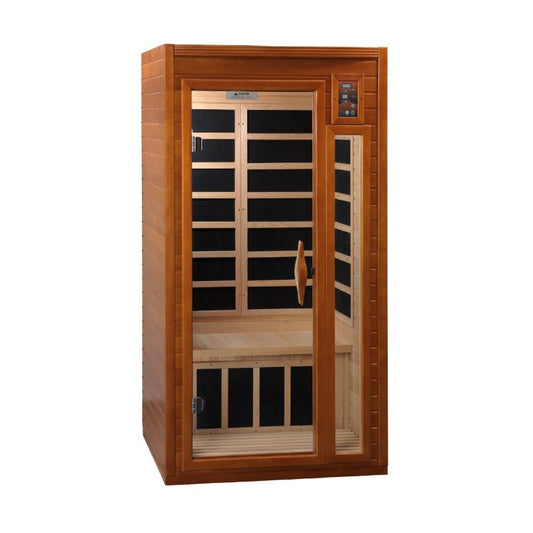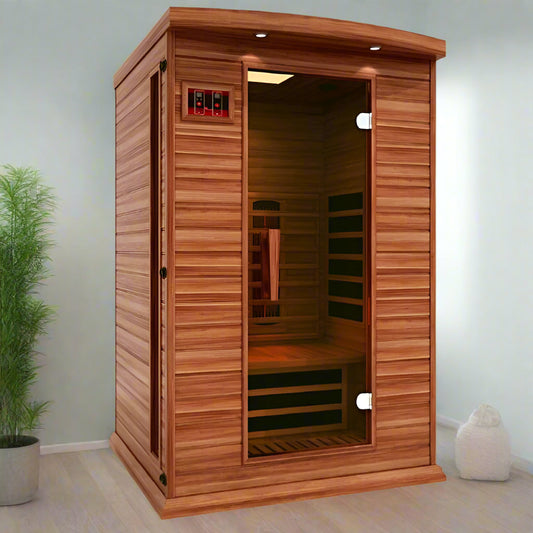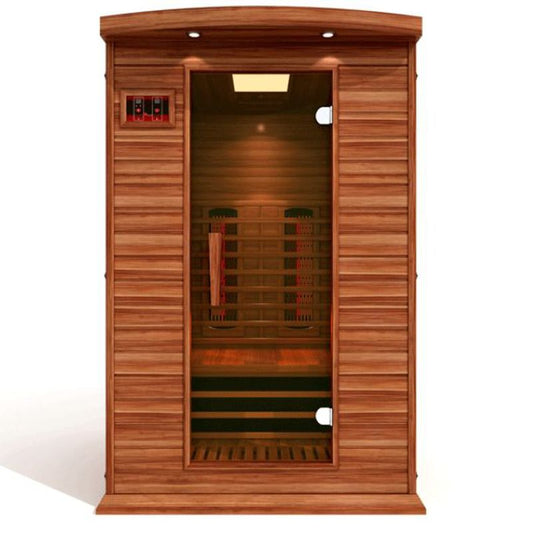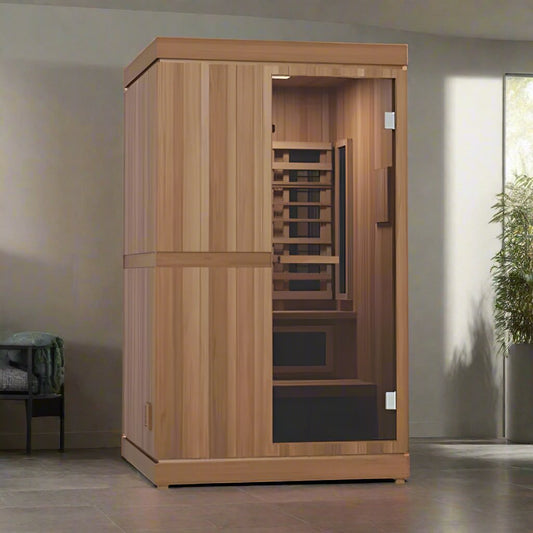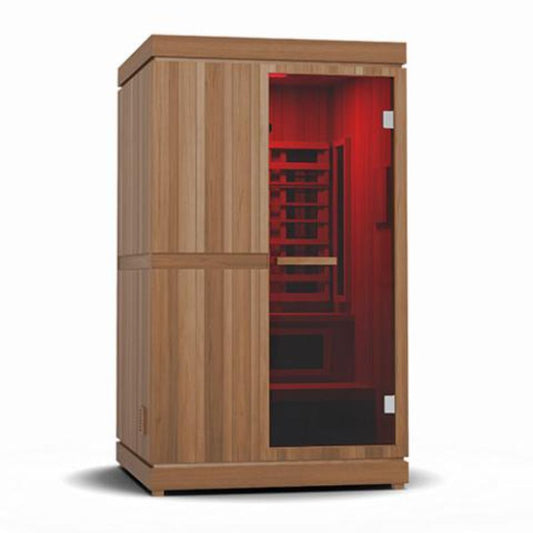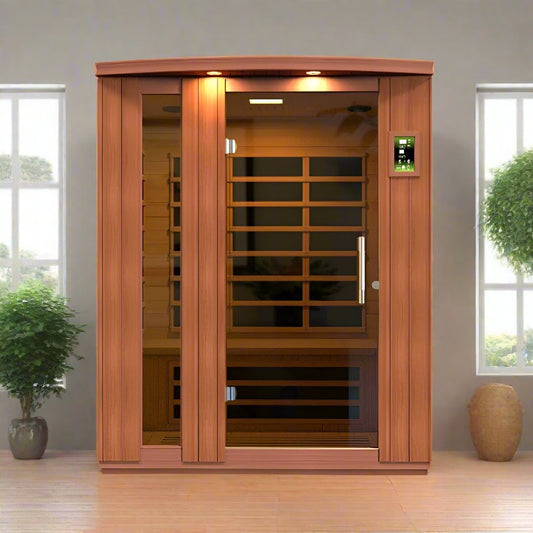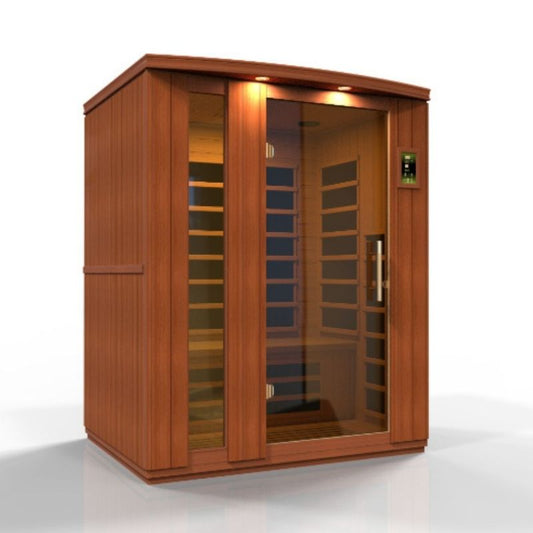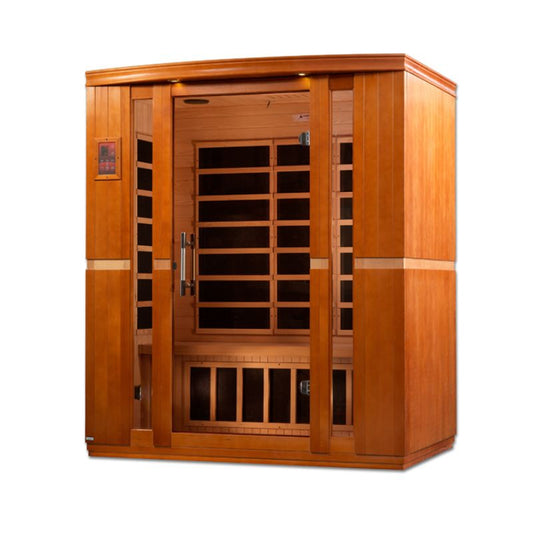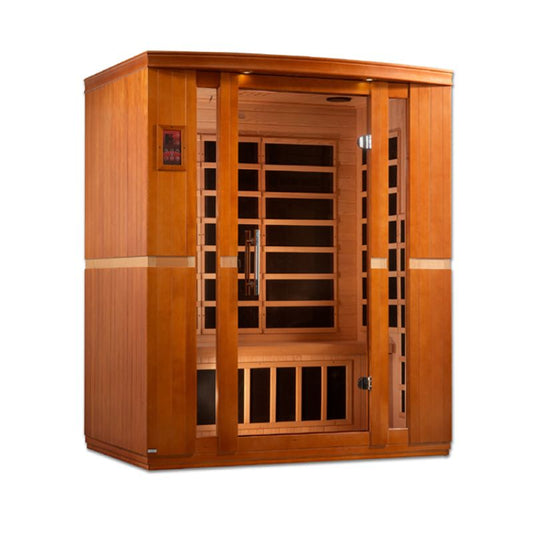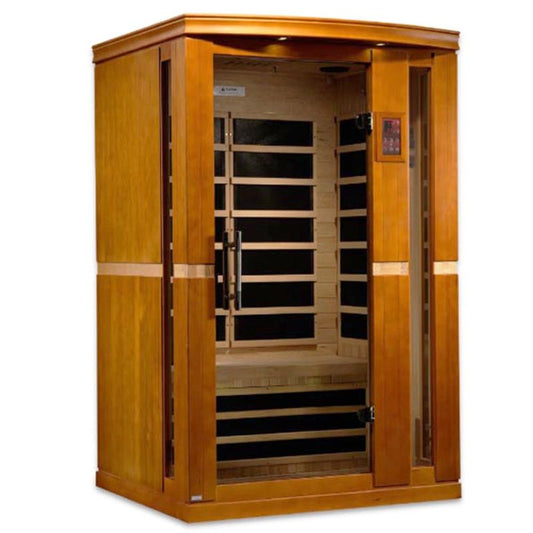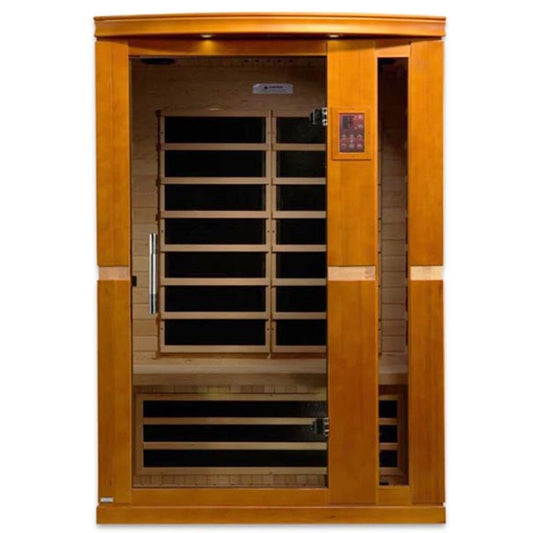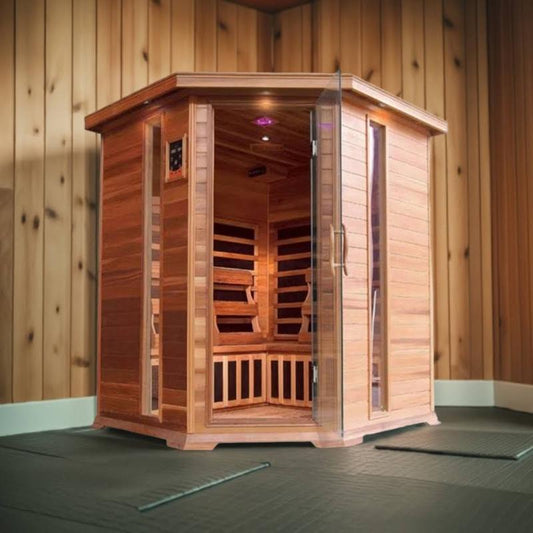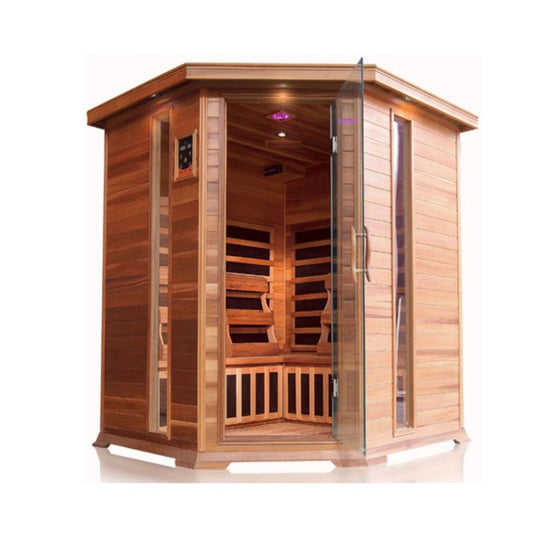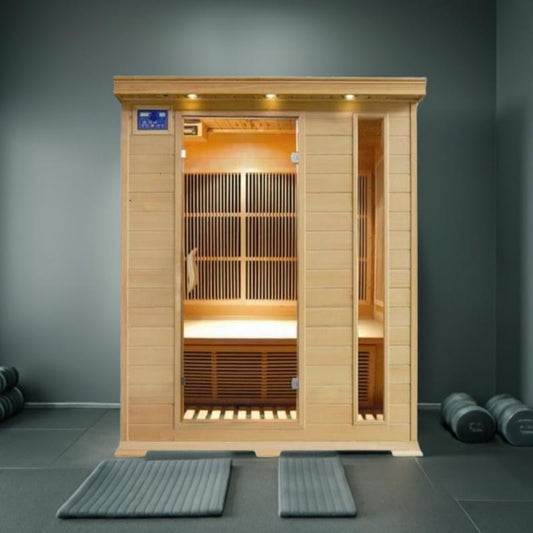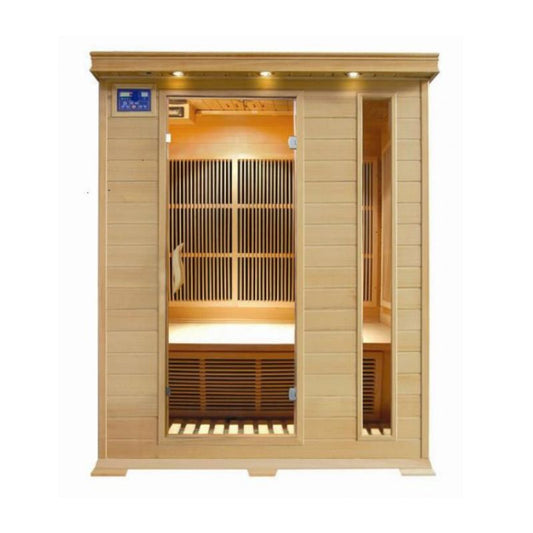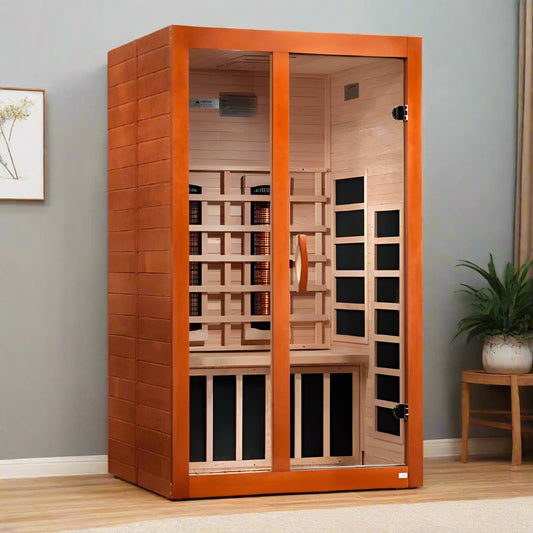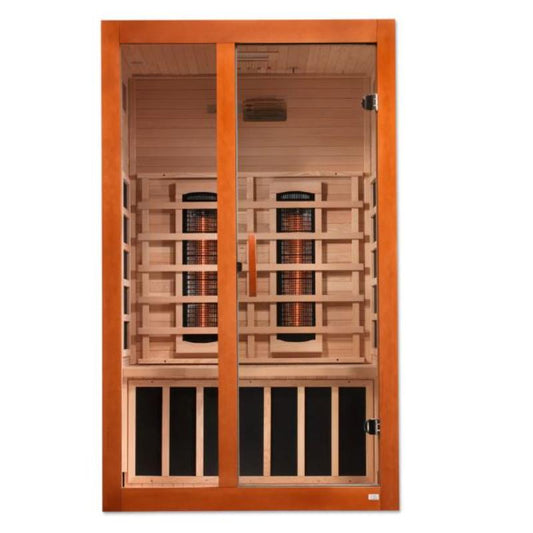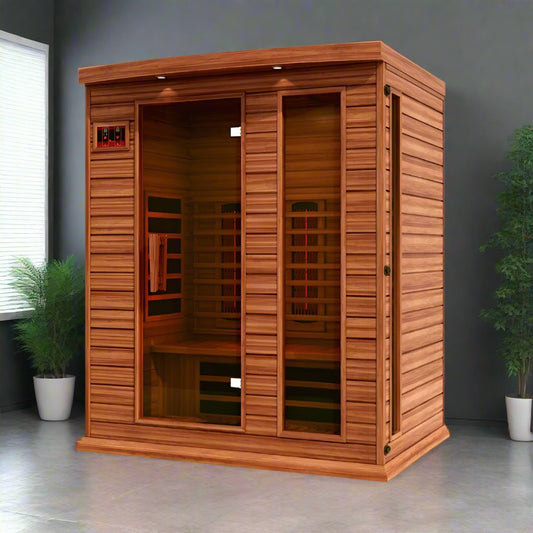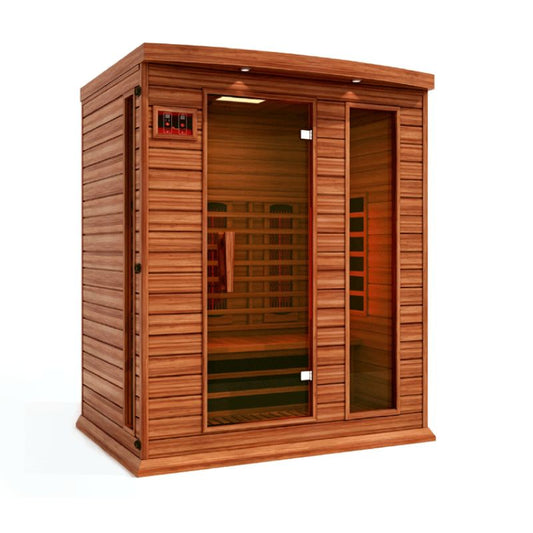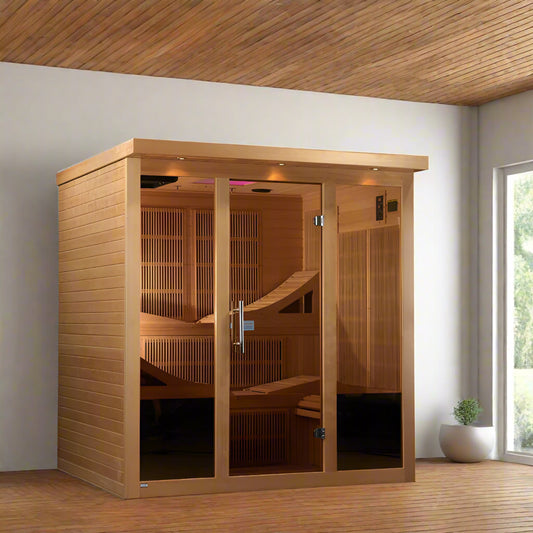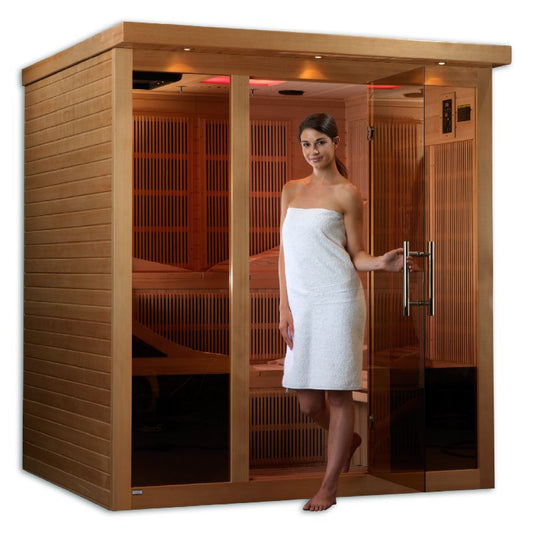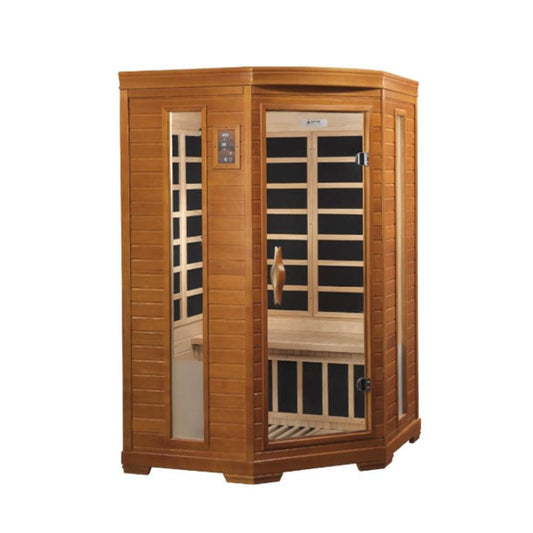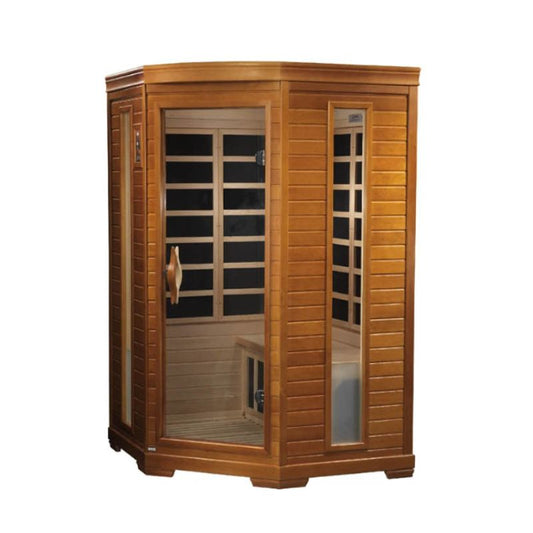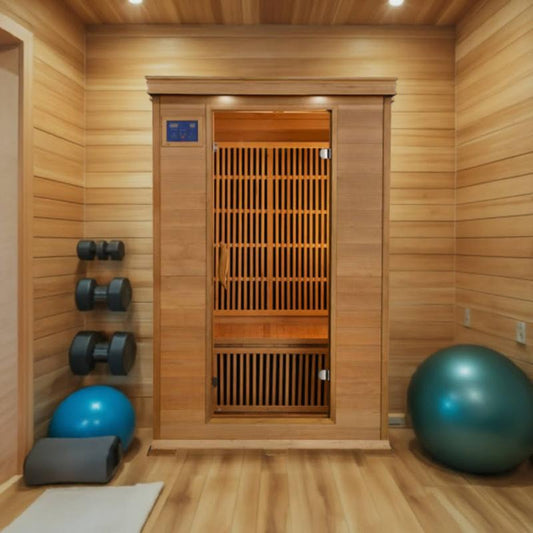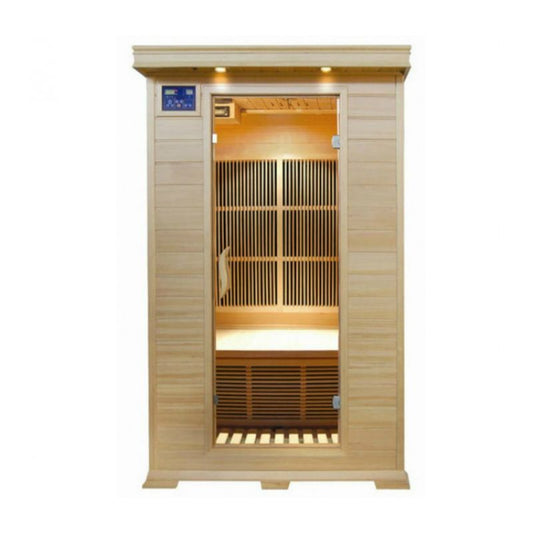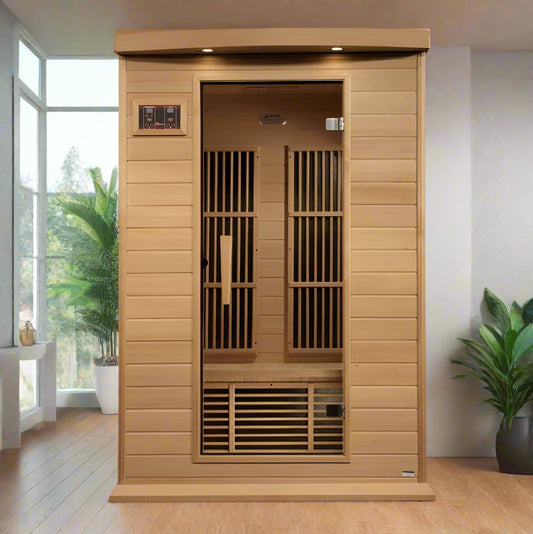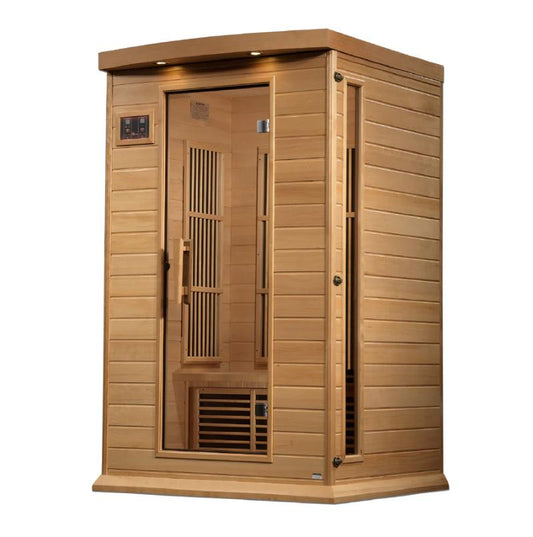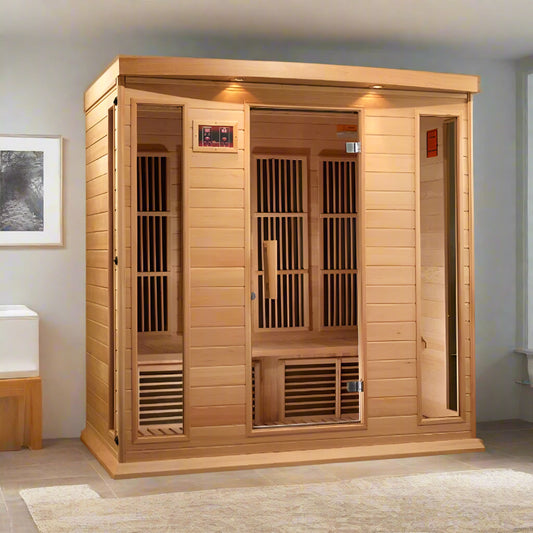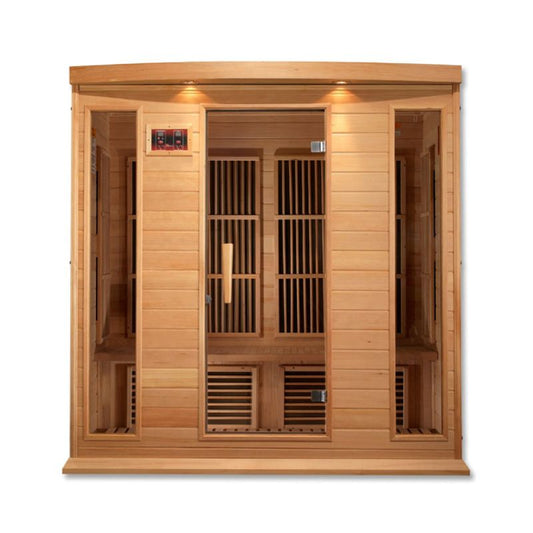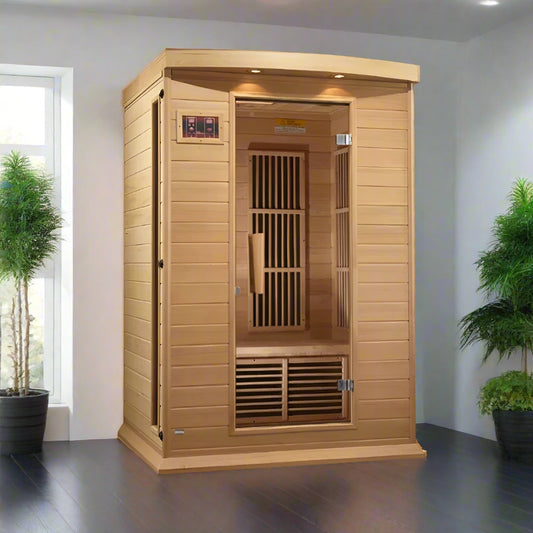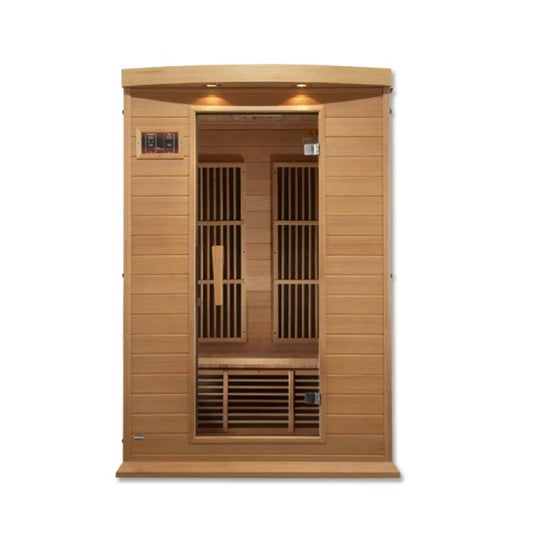-
Dynamic Saunas Barcelona Elite DYN-6106-01 | 2 Person Ultra Low EMF Indoor Far Infrared
Regular price $1,999.00Regular priceUnit price per$3,299.00Sale price $1,999.00Sale -
Dynamic Saunas - San Marino DYN-6206-01 | 2 Person Low EMF Far Infrared Sauna
Regular price $2,099.00Regular priceUnit price per$3,299.00Sale price $2,099.00Sale -
Maxxus 2 Person Sauna - Seattle MX-J206-01 | Low EMF, Indoor FAR Infrared Sauna
Regular price $2,099.00Regular priceUnit price per$2,999.00Sale price $2,099.00Sale -
SunRay Roslyn 4 Person Indoor Infrared Sauna - Red Cedar | HL400KS
Regular price $4,299.00Regular priceUnit price per$6,449.00Sale price $4,299.00Sale -
Dynamic Saunas Versailles DYN-6202-03 | 2 Person Low EMF Far Infrared Sauna
Regular price $2,099.00Regular priceUnit price per$3,299.00Sale price $2,099.00Sale -
Dynamic Saunas Venice DYN-6210-01 | 2 Person Low EMF Far Infrared Sauna
Regular price $2,299.00Regular priceUnit price per$3,999.00Sale price $2,299.00Sold out -
Dynamic Saunas Cardoba Full Spectrum DYN-6203-02 FS | 2 Person Indoor Infrared Sauna
Regular price $2,899.00Regular priceUnit price per$3,999.00Sale price $2,899.00Sale -
Golden Designs Catalonia GDI-6880-02 | 8 Person/Hot Yoga Room Sauna
Regular price $8,999.00Regular priceUnit price per$12,999.00Sale price $8,999.00Sale -
Dynamic Saunas Barcelona, Low EMF, DYN-6106-01 | 2 Person Indoor Far Infrared
Regular price $1,799.00Regular priceUnit price per$2,899.00Sale price $1,799.00Sale -
Maxxus Sauna - 2 person Full Spectrum Indoor Infrared Sauna | MX-M206-01 FS CED
Regular price $4,295.00Regular priceUnit price per$5,895.00Sale price $4,295.00Sold out -
Finnmark Trinity 2-Person Hybrid Home Sauna with Infrared & Traditional Heat | FD-4
Regular price $7,795.00Regular priceUnit price per$8,799.00Sale price $7,795.00Sold out -
Dynamic Sauna Lugano DYN-6336-02 | 3 Person Low EMF Far Infrared Sauna
Regular price $2,499.00Regular priceUnit price per$4,999.00Sale price $2,499.00Sale -
Dynamic Saunas Bellagio DYN-6306-02 | 2-3 Person Low EMF Far Infrared Sauna
Regular price $2,499.00Regular priceUnit price per$4,999.00Sale price $2,499.00Sold out -
Dynamic Saunas Vittoria DYN-6220-01 | 2 Person Low EMF Far Infrared Sauna
Regular price $2,299.00Regular priceUnit price per$3,999.00Sale price $2,299.00Sale -
SunRay Bristol Bay Corner 4 Person Infrared Sauna - Red Cedar | HL400KC
Regular price $4,299.00Regular priceUnit price per$6,449.00Sale price $4,299.00Sale -
SunRay Aspen 3 Person, Indoor Infrared Sauna - Canadian Hemlock | HL300C
Regular price $3,299.00Regular priceUnit price per$4,949.00Sale price $3,299.00Sale -
Dynamic Saunas Santiago DYN-6209-03 | 2 Person Indoor Full Spectrum Infrared Sauna
Regular price $2,899.00Regular priceUnit price per$3,999.00Sale price $2,899.00Sale -
Maxxus MX-M306-01 FS CED | Full Spectrum Indoor Infrared Sauna - 3 Person
Regular price $4,695.00Regular priceUnit price per$6,495.00Sale price $4,695.00Sold out -
Golden Designs - Monaco Elite GDI-6996-01 | 6 Person Near Zero EMF, Infrared Sauna
Regular price $5,999.00Regular priceUnit price per$6,999.00Sale price $5,999.00Sale -
Dynamic Saunas - Heming 2 Person Low EMF Far Infrared Sauna | DYN-6225-02
Regular price $2,499.00Regular priceUnit price per$3,899.00Sale price $2,499.00Sale -
SunRay Evansport 2 Person, Indoor Infrared Sauna - Canadian Hemlock | HL200C
Regular price $2,699.00Regular priceUnit price per$4,049.00Sale price $2,699.00Sold out -
Maxxus 2 Person Sauna - MX-J206-01 ZF | Near Zero, Indoor FAR Infrared Sauna
Regular price $2,299.00Regular priceUnit price per$3,499.00Sale price $2,299.00Sale -
Maxxus MX-K406-01 | 4 Person Low EMF Indoor FAR Infrared Sauna
Regular price From $3,299.00Regular priceUnit price per$4,999.00Sale price From $3,299.00Sale -
Maxxus MX-K206-01 | 2 Person Low & Near Zero EMF - Far Infrared Sauna
Regular price From $2,499.00Regular priceUnit price per$3,499.00Sale price From $2,499.00Sold out

